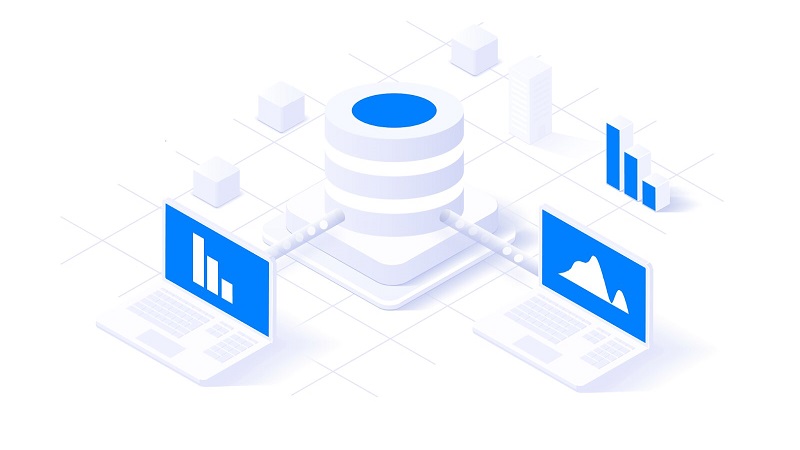Introduction
The present-day cloud data platform has become indispensable to the digital transformation plan of every firm. The contemporary cloud data warehouse offers effective data management means, including more than cloud storage. Additionally, it facilitates the comprehension of the data by providing analytical tools that enable the examination of occurrences via the data.
The volume of data being generated is seeing exponential growth annually, prompting firms to seek strategies for effectively using this data to get enhanced business insights. Cloud data platforms, often known as data warehouses, have become essential as corporations rejuvenate their cloud strategy. Microsoft Azure, Amazon Web Services, and Google Cloud Platform (GCP) are examples of Cloud Data warehouse selection criteria that provide convenient access to extensive storage capacity and computational capabilities.
These services enable enterprises to rapidly expand their data processing capabilities in response to increasing demands. Nevertheless, selecting an optimal cloud data platform might present difficulties. In addition to Snowflake and Databricks, the three leading Cloud Service Providers (CSPs) provide varying support, price, and functionality.
Understand Cloud Data Warehouse Features

Image Credit: Fivetran
1. Oriented Toward Business
An organization that organizes data according to specific subjects or business sectors, such as sales, is called a data warehouse. If you and others can access and utilize your files readily, it is essential to choose a method of naming and organizing them that is logical and consistent. To start with, the commencement of a project is the best time to consider the identification and organization of the folders and files you will be making, as well as financial information.
2. Integrated
A database, a spreadsheet, or a dashboard are all instances of destinations that might be applied for data alliance; this is the procedure of integrating data from many sources into a single location. Numerous different sources of data are fitted into a data warehouse. On the other hand, data confederacy allows you to access and query data from various sources, such as transactional systems, external data sources, and other databases.
3. Varying with Time
Archiving historical data in a data warehouse makes it possible to analyze patterns and trends across various periods. By calculating Cloud Data warehouse selection criteria moving averages, one may smooth out only temporary oscillations and bring attention to the pattern underlying the data. Trend analysis may be of great use in identifying areas of opportunity and possible threats and making forecasts about future behavior.
4. Relatively Stable
After being placed in the warehouse, the data is not altered, which guarantees the data’s consistency and dependability. The successful use of countermeasures may be hindered by several reasons, including unavailable material and media that cannot be wiped out efficiently.
5. Research-based
Users can obtain intelligent insights from a data warehouse since it is geared for data examination. In the field of trend analysis, line charts are a handy tool. Because of their assistance, we can recognize patterns, trends, and abnormalities in the data that would otherwise remain concealed. Cloud data warehouse features allow users to enjoy countless advantages, such as affordable costs, quick accessibility, and easy-to-use facilities. Customers can avail of resources from any place. You would need an internet connection to use this technology. Business owners have the leverage to select a wide range of models of cloud solutions. When you use a myriad of models, you can meet the specific needs of your business.
Popular Providers: Cloud Data Warehouse Comparison
When we talk about cloud data warehousing, selecting the proper provider could knowingly influence the achievement of your data approach. Let’s assess a few of the relatively well-known cloud data warehousing makers to assist you in creating the finest decision.
Amazon Redshift
Amazon Redshift is a commanding and flexible data warehousing solution introduced by Amazon Web Services (AWS). Called for its higher performance and less expense, Redshift is used by several firms for its all-in-one incorporation with additional AWS services and SQL integration. With features such as automatic scaling and encoding, Amazon Redshift can go ahead with Cloud data warehouse comparison depending on unique needs as the best one for firms seeing to connect the influence of cloud data warehousing.
Google BigQuery
Google BigQuery is the kind of Google Cloud structure that comes with a completely handled data warehousing answer that outshines in dispensation and analyzing massive datasets with speedy swiftness. There is no server, and the customizable nature of the design and inexpensive-to-use price mechanism makes it a viable choice for businesses of all sizes. With unconventional inquiring competencies and ML incorporations, Google BigQuery is a famous selection for firms looking for actual-time understandings via the data.
Snowflake
Snowflake is the cloud platform that mixes the advantages of a data warehouse, information lakes, and data business. Recognized for its simplicity, Snowflake allows customers to store and examine organized and semi-structured data easily. Its exclusive style splits storage and calculation, allowing unified grading and function maximization. With structures and aspects such as safely viewing and collaborating on data, Snowflake is a contemporary resolution for industries seeking to solve the complete possibility of their data.
By comparing the features, costs, and functions of such well-known cloud data warehousing providers, you would select the one that best fits the firm’s requirements and areas. Remember to know reasons like data capacity, query trouble, budget, and integration needs to make a conversant. Effective decision-making is crucial for achieving fulfillment with data ventures.
Cost Analysis of Data Warehouse Solutions
Examining the cost of data warehouse solutions could be difficult and relies on many reasons, like positioning prototypical, storage needs, handing out power, data capacity, and the correct structures and competencies of the complexity. Here are some key cost factors to consider when analyzing cloud data warehousing solutions.
1. Upfront Costs
-
Software License:
Some data warehouse solutions require upfront software license fees.
-
Hardware Costs:
For on-premises solutions, you must know the cost of servers, storing data, network tools, and so on.
-
Application Expense:
The expense associated with the result’s implementation, configuration, and customization.
2. Operating Costs
-
Cloud Costs:
If you opt for a cloud-based data warehouse solution, for example, Snowflake, you would be required to know expenses connected to storing, additions, changes of data, and additional facilities.
-
On-Premises Expense:
Maintain promotions, authority feeding, phases, and additional function expenses for on-premises placements.
-
Support and Maintenance:
Continuous support, servicing, and upgrade expenses.
3. Scalability Costs
-
Cost per Query:
Some data warehouse solutions charge based on the data processed per query.
-
Storage Costs:
Consider how storage costs scale as your data volume grows.
-
Compute Costs:
Costs related to computational power required for processing queries.
4. Data Integration Expense
-
ETL Tools:
Costs associated with Extract-Transform-Load (ETL) tools for data integration.
-
Data Migration Costs:
Moving data from existing systems to the Data governance in cloud data warehousing.
5. Training and Support
The expense is connected with training your team on effectively using data warehouse solutions.
6. Additional Features
Costs for additional features like advanced analytics, ML capabilities, data governance, and safety aspects. Remember, the cheapest Cost analysis of data warehouse solutions may sometimes be a challenging, easy one in the long run.
Step-by-Step Guide to Choose the correct Cloud data warehouse

Step 1: Assess Your Data Needs and Goals
Your first phase in selecting the best cloud data warehouse is to thoroughly examine your data necessities and objectives. To choose the sort of cloud data warehouse that will be most suitable for your requirements, it is essential to have a good understanding of your company’s unique needs.
Step 2: Assess Diverse Cloud Data Warehouse Providers
After classifying your needs and objectives for a cloud data warehouse, the subsequent vital phase is examining various marketplace providers. It’s even helpful to deliver client appraisals and case studies to understand the actual-world experiences of the company with such platforms.
Step 3: Consider Scalability
By thoroughly analyzing the capacity and efficiency demands of your data warehouse, you can guarantee that you choose a solution that not only satisfies your present needs but also has the potential to accommodate future expansion and overcome issues related to data processing.
Step 4: Security and Compliance Considerations
Safety and compliance thoughts must be at the topmost of your list of priorities. Guaranteeing that your data is secured and meets supervisory needs is critical for the achievement and dependability of your business processes.
Step 5: The ecology of data tools
Additionally, one has to consider the ecosystem in which the organization is currently operating. You may be considering selecting a data warehouse dependent on Azure or Snowflake if most of your systems are based on Microsoft and if most of them need a bespoke combination and come with SQL Server backing. It would be more hassle-free and would make more sense. On the other hand, if the bulk of your data is stored in S3, then Amazon Web Services (AWS) or Snowflake on AWS would be the most suitable choice.
Conclusion
There are many factors for selecting a cloud data warehouse that comes with several top features. Because several factors might influence the successful deployment of a system, selecting the most suitable cloud data warehouse for your company can be a daunting task. Despite this, an organization can analyze the critical aspects and choose the warehouse that is the most suitable for its requirements if it takes into account the anticipated use cases and workflow conditions.
Frequently Asked Questions
1) What are the steps in preparing for a data warehouse?
Creating a conceptual model, checking business needs, developing a logical model, etc., are some steps in planning DWS.
2) What are the most essential elements of a data warehouse?
A central database, extract, convert, load tools, the metadata. Access tools are the four primary components that make up a typical data repository. Access tools are also included.
3) Data warehouse selection: what to consider?
Performance, scalability, critical tools and services, cost, etc, are some aspects any company must check.





